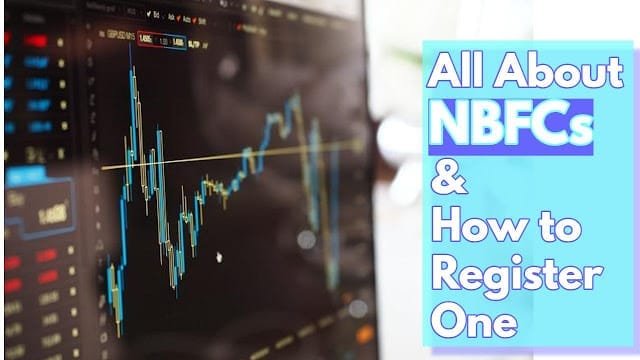Maximizing Manufacturing Lead Generation
Efficient lead generation is crucial for manufacturing companies aiming to expand their client base. This section outlines strategies to define objectives, leverage content marketing, and utilize trade shows for optimal results.
Defining Objectives and Audience
Setting clear objectives is the foundation of effective manufacturing marketing strategies. Before launching any campaign, it is important to delineate what the company aims to achieve, whether it be increasing brand recognition, generating leads, or driving sales. These goals must be specific, measurable, achievable, relevant, and time-bound (SMART).
Identifying the target audience is equally essential. Manufacturing companies often cater to other businesses (B2B markets), so understanding the needs and pain points of potential clients is imperative. This involves creating detailed buyer personas based on demographics, industry, job roles, and purchasing behavior.
Content Marketing Strategies
Content marketing is a powerful tool for engaging prospects at various stages of the B2B sales funnel. Tailored content helps attract and nurture leads by addressing their specific needs.
Content Types and Funnel Stages
| Funnel Stage | Content Types | Objective |
|---|---|---|
| Awareness (Top) | Blog Posts, Infographics, Videos | Educate and attract new visitors |
| Consideration (Middle) | E-books, Webinars, Case Studies | Engage and inform decision-makers |
| Decision (Bottom) | Whitepapers, Free Trials, Demos | Convince and convert prospects |
Creating valuable and relevant content positions the company as a trusted resource in the industry. Focus on topics that resonate with the target audience’s challenges and offer practical solutions.
Utilize SEO techniques to ensure content reaches the right audience. Implementing keywords, such as “manufacturing lead generation strategies,” optimizes content for search engines, driving organic traffic and generating leads (Axellerato). Learn more about seo for manufacturing industry.
Leveraging Trade Shows and Events
Trade shows and industry events are excellent avenues for manufacturers to showcase products, network, and generate leads. These events offer direct interactions with potential clients, contributing to brand visibility and industry insights.
Key Strategies for Trade Shows
- Booth Design: An eye-catching and informative booth attracts visitors.
- Demonstrations: Live product demonstrations engage attendees and highlight product benefits.
- Networking: Build relationships with industry peers, potential clients, and partners.
- Follow-Up: Collect contact information and follow up promptly to convert leads into sales.
Incorporating attractive incentives like free consultations or product samples can draw more attendees to the booth. These offers should demonstrate the company’s expertise and provide practical solutions, enticing potential customers to share their contact information (Fulminous Software).
For more comprehensive strategies, explore our guide on b2b manufacturing marketing tactics.
By defining clear objectives, creating tailored content, and leveraging trade shows effectively, manufacturing companies can maximize their lead generation efforts, driving successful outcomes and sustainable growth.
Digital Strategies for Lead Generation
In the competitive world of manufacturing, generating high-quality leads is essential for growth and success. Digital strategies offer an effective way to connect with potential clients in B2B markets. This section will explore various methods including effective SEO, lead generation techniques, and overcoming challenges specific to the manufacturing industry.
Implementing Effective SEO
SEO, or search engine optimization, is vital for any digital marketing strategy. For manufacturers, optimizing the website to appear in search engine results pages (SERPs) can increase visibility and drive more traffic. These website visitors can be converted into leads with the right approach.
SEO involves several key components:
- Keyword Research: Identifying relevant and high-traffic keywords such as “manufacturing lead generation strategies” will help attract the target audience.
- On-Page Optimization: Ensuring that all web pages are optimized with appropriate titles, meta descriptions, headers, and content that includes the target keywords.
- Technical SEO: Improving site speed, mobile responsiveness, and ensuring a logical site structure to facilitate easy crawling by search engines.
For further detailed strategies, visit our page on SEO for manufacturing industry.
Harnessing Lead Generation Techniques
Manufacturers can leverage several techniques to attract and convert high-quality leads. Here are some strategies:
- Content Marketing: Creating and distributing valuable, relevant content to attract the defined audience. This includes blog posts, whitepapers, case studies, and infographics tailored to the manufacturing sector. Visit our detailed guide on manufacturing content marketing.
- Paid Search Advertising: Utilizing platforms like Google Ads to create pay-per-click (PPC) campaigns that target specific keywords. This method can quickly bring targeted leads to the website. For insights on optimizing paid campaigns, explore PPC for manufacturing businesses.
| Technique | Example | Description |
|---|---|---|
| Content Marketing | Blog Posts, Whitepapers | Educate and inform the target audience. |
| Paid Search Advertising | Google Ads Campaigns | Target specific keywords to bring in leads quickly. |
Overcoming Manufacturing Challenges
The complex nature of manufacturing processes often entails a longer sales cycle and a more consultative approach. Manufacturers must address these unique challenges to succeed in lead generation.
- Longer Sales Cycles: The manufacturing industry requires a deep understanding of the product’s value proposition. Focus on creating high-quality leads that are well-informed about the product. Educational content and detailed specifications can help in this regard.
- Data Utilization: Leveraging existing data sources like Google Analytics, social media insights, and CRM systems to refine lead profiles ensures more targeted marketing efforts (Venveo).
For additional insights on digital marketing strategies, visit digital marketing for manufacturers and learn how to tackle the challenges specific to the manufacturing sector effectively.
By implementing effective SEO, harnessing appropriate lead generation techniques, and overcoming manufacturing-specific hurdles, manufacturers can master the digital strategies necessary for successful lead generation.
Inbound vs. Outbound Marketing
Effective manufacturing lead generation strategies involve a careful balance between inbound and outbound marketing. This section discusses the approaches and methods best suited to maximally leverage both.
Inbound Marketing Approach
Inbound marketing is centered around attracting customers through valuable content and experiences tailored to them. For manufacturers, content marketing plays a crucial role in engaging prospects at different stages of the B2B sales funnel: Awareness, Consideration, and Decision (Vital Design). Creating and sharing content that addresses prospects’ needs at each stage can effectively attract and nurture leads.
Key Inbound Strategies:
- Blog Posts: Regularly updated blogs with informative content about manufacturing processes, industry trends, and case studies can draw in potential clients. Explore our section on manufacturing content marketing.
- SEO: Implementing effective SEO strategies ensures your content ranks higher in search engine results, bringing organic traffic to your site.
- Landing Pages and Forms: Companies that increase their number of landing pages from 10 to 15 see a 55% increase in leads (Thomasnet). These pages targeted to specific marketing campaigns can capture leads effectively.
| Tactic | Leads Increase |
|---|---|
| Increase Landing Pages | 55% |
Visit our article on website optimization for lead generation for more insights.
Outbound Marketing Methods
Outbound marketing involves actively reaching out to potential customers. Though sometimes seen as more intrusive, it can be highly effective when done right, especially in B2B industries like manufacturing.
Key Outbound Strategies:
- Trade Shows and Events: Participating can offer opportunities for networking, showcasing products, and demonstrating expertise (Axellerato). Combining these events with inbound strategies can maximize reach.
- Direct Mail Campaigns: Thoughtful and targeted mail can capture attention and drive inquiries.
- Telemarketing: Engaging prospects directly via phone calls can convert curiosity into clients.
For a deeper dive into these methods, explore our section on manufacturing marketing strategies.
Social Media Strategies for Lead Generation
Social media platforms like LinkedIn, Facebook, and Twitter are invaluable for B2B lead generation in manufacturing. Leveraging both organic and paid social media benefits a holistic marketing strategy by building brand awareness and engaging specific business objectives.
Key Social Media Strategies:
- Organic Engagement: Regular posting, sharing industry news, and engaging with your audience build loyalty and awareness.
- Paid Advertising: Social media ads can reach an extended audience and drive traffic to specific landing pages. Campaigns can be tailored to retarget previous website visitors or similar audience demographics.
Explore more about social media marketing for manufacturers.
By balancing inbound and outbound marketing strategies, manufacturers can create a robust lead generation system that addresses both immediate needs and long-term growth.
Email Marketing for Manufacturers
Email marketing is a vital tool for generating leads within the manufacturing sector. This section delves into its significance, effective strategies, and automation techniques.
Importance of Email Marketing
Email marketing remains a powerful tool for manufacturing lead generation strategies. By building an email list and sending targeted, personalized emails, companies can nurture leads through the sales funnel. Email marketing platforms, like MailChimp and HubSpot, streamline this process by automating communications and ensuring relevant engagement with prospects, thereby enhancing lead generation efforts (Axellerato).
According to OroCommerce, email marketing boasts the highest ROI among all marketing activities, making it an efficient way to maintain contact with existing customers and reach new leads. The challenge lies in crafting compelling emails that capture attention and drive action.
Strategies for Effective Email Campaigns
Developing effective email campaigns is pivotal for manufacturing marketing. Here are key strategies to consider:
- Segmentation: Segment your email list based on criteria such as industry, company size, and job role to ensure tailored content.
- Personalization: Use personalized greetings and tailor content to address the specific needs and pain points of each segment.
- Compelling CTAs: Include clear and persuasive calls-to-action to guide recipients toward the desired next step.
- Content Value: Offer valuable content such as industry insights, product updates, and case studies to establish authority and maintain engagement.
- A/B Testing: Conduct A/B tests on email subject lines, content, and CTAs to determine what resonates best with your audience.
By implementing these strategies, manufacturers can create engaging email campaigns that effectively generate leads. For a broader overview of our tactics, visit our manufacturing content marketing page.
Utilizing Email Marketing Automation
Email marketing automation tools play a crucial role in maximizing the efficiency and effectiveness of email campaigns. Platforms like MailChimp, HubSpot, and ActiveCampaign offer features such as automated workflows, A/B testing, and robust analytics (OroCommerce).
- Automated Workflows: Set up workflows to automatically send emails based on triggers such as user behavior, actions on your website, or time-based milestones.
- A/B Testing: Regularly test different elements of your emails to optimize performance.
- Analytics and Reporting: Leverage analytics to understand open rates, click-through rates, and conversion rates, allowing for data-driven adjustments.
- Integration with CRM: Integrate your email marketing platform with your CRM to keep track of lead interactions and manage customer relationships efficiently.
By utilizing these automation techniques, manufacturers can ensure timely and relevant communication with their prospects, thus improving their overall lead generation efforts. Explore more on how to implement these strategies in our guide on manufacturing marketing automation.
In conclusion, email marketing remains an essential component of effective manufacturing lead generation strategies. By prioritizing segmentation, personalization, automation, and data analysis, manufacturers can enhance their marketing efforts and drive substantial growth in their lead generation processes.
Industrial Lead Generation Techniques
Manufacturers face unique challenges in lead generation due to the complexity of manufacturing processes, which often require a longer sales cycle and a more consultative approach to selling. Utilizing effective techniques such as offers and calls-to-action, landing pages and forms, and website optimization can help generate quality leads and expand the client base in the B2B market.
Offers and Calls-to-Action
Developing compelling offers and clear calls-to-action (CTAs) is paramount for capturing potential leads. Offers can include whitepapers, eBooks, case studies, webinars, and product demos. These valuable resources provide information and solutions to common industry problems, enticing potential clients to engage with your brand.
CTAs should be strategically placed throughout your website and marketing materials to guide visitors toward taking specific actions. Effective CTAs are clear, concise, and direct, making it easy for leads to understand the benefits of engaging further.
Example of Effective CTAs:
- Download Our Free Whitepaper
- Request a Free Product Demo
- Sign Up for Our Webinar
Landing Pages and Forms
Landing pages are specialized web pages designed to convert visitors into leads. Each landing page should be dedicated to a single offer and include a form for visitors to fill out in exchange for the offered resource. The form should ask for essential information needed to qualify the lead without overwhelming the visitor.
Key elements of effective landing pages:
- Relevant Headline: Clearly state the benefit of the offer.
- Brief Description: Summarize the offer and its value.
- Form: Include fields for name, email, company, and other relevant information.
- CTA Button: Use a strong and action-oriented button text, such as “Download Now” or “Get Started.”
Website Optimization for Lead Generation
Your website is often the first point of contact for potential customers. Optimizing it for lead generation is essential for attracting and converting visitors. This includes leveraging SEO strategies, ensuring mobile-friendliness, and creating a user-friendly experience.
Areas to focus on for website optimization:
- SEO Implementation: Incorporate relevant keywords related to manufacturing lead generation strategies to improve search rankings. For more, visit our article on seo for manufacturing industry.
- Content Quality: Provide valuable and comprehensive content that addresses the needs and pain points of your target audience. Check out our section on manufacturing content marketing.
- User Experience: Ensure easy navigation, fast load times, and a mobile-friendly design.
- Conversion Pathways: Create clear and intuitive pathways for visitors to become leads, including prominent CTAs and contact forms.
In the competitive field of manufacturing marketing, utilizing these industrial lead generation techniques can significantly improve your ability to attract and convert high-value leads. For more advanced tactics, visit our page on b2b manufacturing marketing tactics.





















